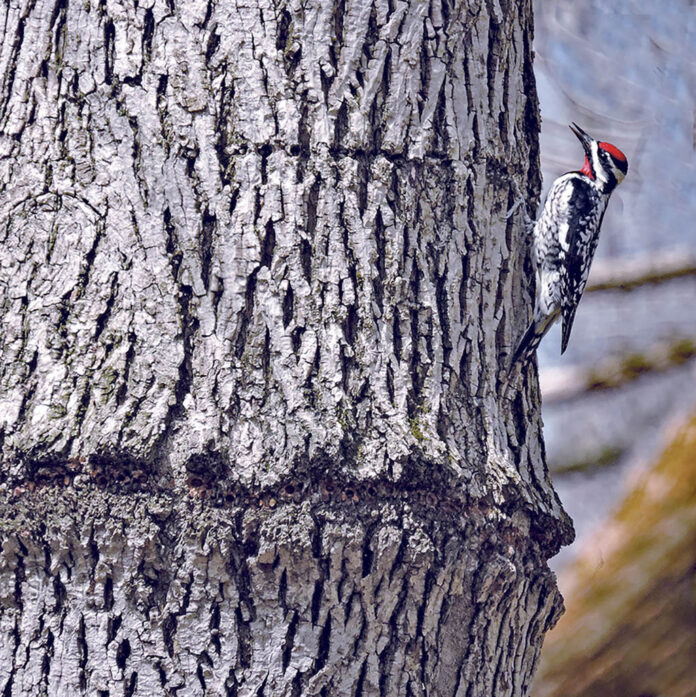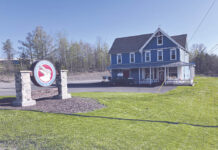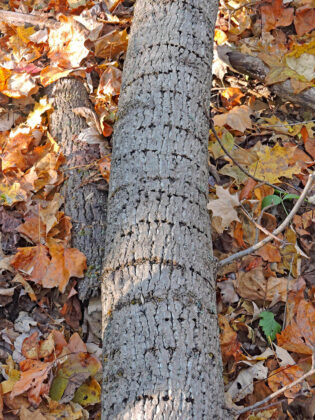
With its beech-maple climax forest, it’s no wonder that Geauga County is the number one county in Ohio for maple syrup production. Having grown up here, sugaring was a regular part of my life, the season culminating annually with the much-anticipated Maple Festival in Chardon, Ohio.
March has always been the month for sugaring, so when a friend of mine recently informed me that he has tapped in February for the past 14 years, I was shocked. I knew the commencement of sugaring had been inching earlier and earlier in the year due to climate change, but I didn’t realize that it had been going on for that long. In fact, during the past few years, the weather has warmed so much that sugaring operations in Geauga County are now usually concluded by mid-March.
Sap
Maple syrup is made from the sap of maple trees. Although the sugar maple typically has the highest percentage of sugar in its sap, red maples are tapped as well. But red maples bud out early, abbreviating their season.
All species of trees produce sap, and they have highly specialized vascular systems composed of xylem and phloem to ensure that the precious liquid travels effectively throughout the tree.
Xylem is composed of dead, waterproof tissue. It is responsible for transporting water from the roots up into the rest of the tree. This early “sap” is composed of minerals from the soil and sugars that have been manufactured or stored within the root system throughout the winter. Phloem, on the other hand, is composed of living tissue. Its function is to transport food and nutrients such as sugars and proteins produced by the photosynthesis of the leaves to the rest of the plant. Together, xylem and phloem function much like blood vessels in animals and make up a complex network that not only supplies resources to various parts of the tree but also serves to dispose of waste products.
Yellow-bellied sapsucker
It shouldn’t be surprising that humans aren’t the only ones that benefit from tree sap. There are a host of wildlife species that depend upon it, but only one that bears its name.
The yellow-bellied sapsucker (Sphyrapicus varius) is a medium-sized woodpecker, perceived in stature as somewhere between a downy and a hairy. This striking bird displays boldly patterned black and white plumage on its back with a vertical white stripe along the front edge of its folded wings. Its black and white face is punctuated by a crimson cap in both sexes with the addition of a brilliant ruby throat on the males. Sapsuckers often raise their crown feathers to form a peak at the rear of their head. They also display an impressive black chest band, and yes, they often have a yellow belly which can be challenging to view.
Yellow-bellied sapsuckers breed throughout much of Canada and into the northeastern United States. Beginning in September, the birds commence their southward migrations. Some individuals travel only a short distance while others wing their way as far south as Central America where they take up residence in both hardwood and evergreen forests. Although their diet consists of a variety of small arthropods, fruits, nuts and suet, it’s their affinity for sap that has earned them their unusual moniker.
Starting in early spring, yellow-bellied sapsuckers tap into the bark of trees. Although they have been documented utilizing well over 200 different species, the ones with higher sugar content are favored. These include maples, birches and hickories. Setting their stiff tails against the trunks for support, the birds launch their stout, straight beaks into action, carefully drilling into the xylem to catch the sugary sap as it moves upward from the roots. As if creating a piece of artwork, horizontal rows of perfectly spaced circular holes are created.
As liquid begins to leak from these sap wells, flowing down across the bark, the birds depart for a while. In time, small insects are attracted to the sweet secretions, some even getting trapped in the sticky sap. Finally, the sapsuckers return to feast. Using their long, specialized tongues equipped with a brush-like appendage near the tip, they efficiently lap up the sap and the insects.
As the trees begin to leaf out, the sapsuckers create new holes, this time drilling into the phloem which carries sugar and other nutrients from the leaves. Phloem holes are larger, much shallower and more rectangular in shape, often appearing in vertical rows. Because the phloem is live tissue, it is always in the process of repairing itself, much like the scab on a wound. Therefore, sapsuckers must remain close to their work, constantly redrilling their tap holes to keep the sap flowing and holes from closing.
Once created, sapsucker tap wells become lifesaving sources of food for a variety of wildlife. Early emerging moth and butterfly species, such as mourning cloaks, question marks, Duskywings and commas can be seen resting on the bark near the holes, slurping up the life-giving liquid. Squirrels, too, such as red squirrels and flying squirrels covet the easy meal.
There are dozens of bird species that can be observed feeding at the holes; nuthatches, chickadees, kinglets, warblers and waxwings to name a few. But it is the ruby-throated hummingbird whose life often depends on the sapsucker’s handwork for its survival. Often arriving on its breeding grounds before flowers are even in bloom, hummingbirds seek out sapsuckers, often trailing them through the forest so that they can locate and capitalize on the sweet sap released by the tapholes. It’s no wonder that sapsuckers expend large amounts of energy defending their wells from other species.
There is a huge bitternut hickory tree at one of our local parks that I make a point of visiting each spring to observe sapsuckers at work. This tree has been utilized by the birds for many years, as indicated by the swelling of multiple layers of scar tissue laid down by the tree in an effort to repair itself. Yet, I never tire of watching the yellow-bellied sapsuckers employing their long, dextrous tongues to lap up the victims that have fallen into their traps. In fact, if it were up to me, I might just be compelled to change the name of this unique little woodpecker to yellow-bellied sap-lapper instead!

















